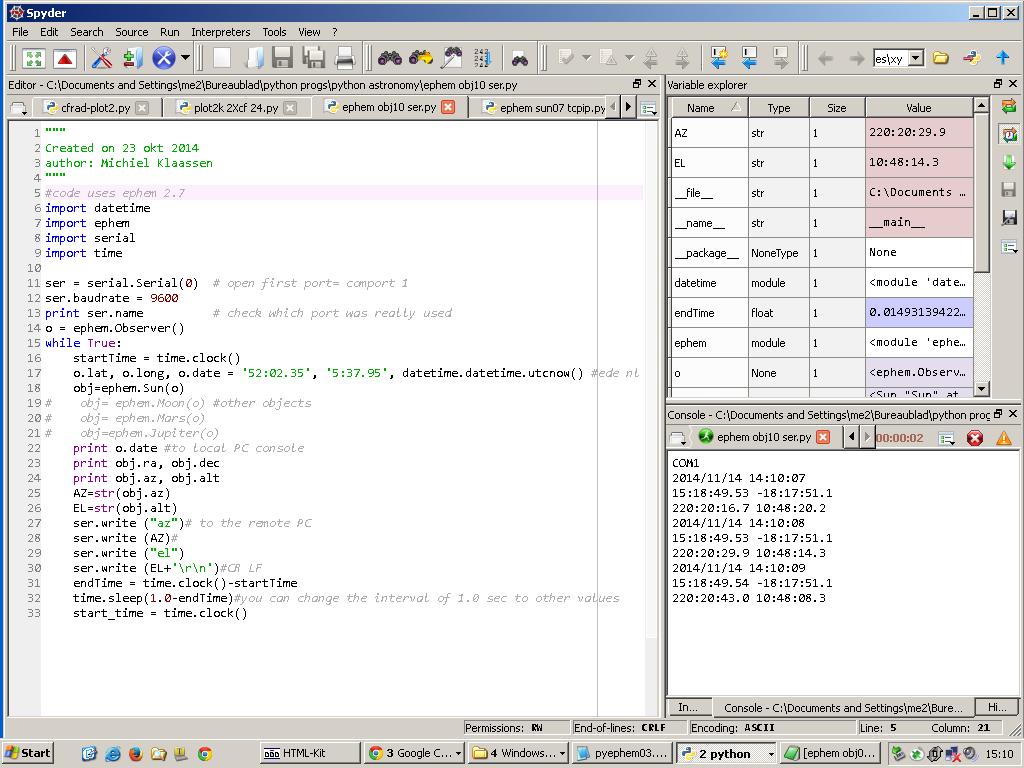

[HOME]
[WEB ALBUMS]
[PROJECTS]
[ARCHIVE]
[DOWNLOADS]
[LINKS]
PROJECTS
Project MK8: Radio Telescope Pointing software
Here is a pointing/tracking script to steer and track celestial objects. The target you have to select can be the sun, the moon, jupiter, other planets or a well known star.
When running the script,it sends every second the azimuth and altutude angle of the target to a communication port of the PC.
The date and the time is retrieved from the PC. Your motor controller has to convert the the angle data to a speed of the motors.
Further you have to fill in your longitude and latitude location.
The in-accuracy is smaller than 1 arc second; this is 0.00027 degrees. Even milli-arcsecond accuracy is claimed when compared to the Naval Observatory's NOVAS library!see https://github.com/brandon-rhodes/pyephem/issues/7
Every second new pointing values are given, but you can change that to some other interval.
The script is written in Python-xy and can be found here https://code.google.com/p/pythonxy/wiki/Downloads.
Included is the an editor called "spider". Programming is like "Basic" in old times.
Further you have to add/run the module called pyephem -3.7.5.3.win32-py2.7.exe (md5) from here; https://pypi.python.org/pypi/pyephem/
Finally add the serial module pyserial -2.7.win32_py3k.exe from here; http://sourceforge.net/projects/pyserial/files/pyserial/2.7/
This script is here:ephem11, and lookes like this:

Fig.1 - Python Ephem.
If your controller wants to see a different format then you can change that in the script.
To test it you use two PC's; one with this program running and via a so called zero modem cable the signal goes to the second PC.
(Via a null modem cable the send pins from PC1 are connected to the receive pins of PC2 and vice versa; easy to make yourself, google it.)
On this second PC you run Hyperterminal with the right settings for instance; 9600 b/s, 8 databits, 1 stopbit, parity; none, flowcontrol; none.
The output looks like this;

Fig.2 - Hyperterminal sample output.
Michiel Klaassen october 2014